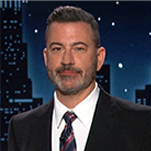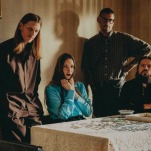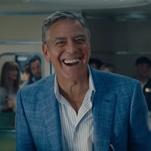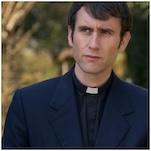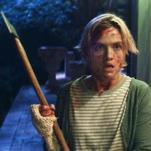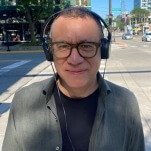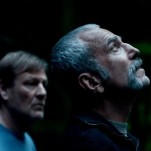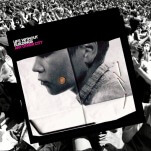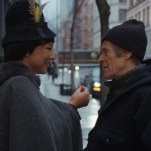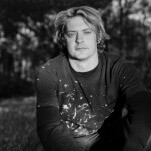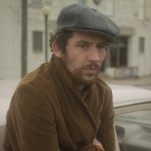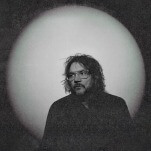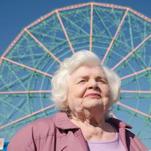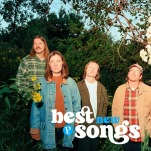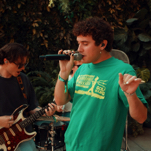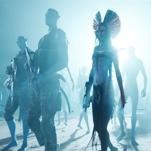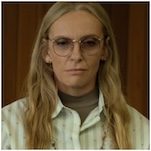National Geographic’s Stunning Into the Okavango Shows It’s Not Too Late to Save the Planet
Photo: Cory Richards/National Geographic
In person, Dr. Steven Boyes comes across as a sort of South African John Muir—it’s not a surprise that Into the Okavango opens with a quote from Muir’s writings. He’s thin and tall, with old-timey mutton chops and a windburned face and a serious thousand-yard stare (as an ornithologist by training, he’s well used to scanning the sky and treeline and horizon). There’s something a bit otherworldly about him, and even though he’s quick to note that he’s “not a religious or particularly spiritual person,” the line between what we call science and what we call mysticism is thinner than you think. And as he notes in Nat Geo Wild’s new documentary, Into the Okavango, both mysticism and science are ways of contending with the wilderness we all came from.
When you parachute into an environment you’ve never experienced before, or even a familiar one you’ve been away from, there’s a perceptive phenomenon sort of like a camera adjusting its focal point. It’s a blur, then the blur resolves to a hyperspecific focus on something close up, then you start to see how the close up thing is related to the thing next to it, and ultimately, you see large patterns. Look at the surface of a stream channel (up close, because in this case you’re sitting low in a dugout canoe). You are aware that there is water. You are aware that there are reeds and lily pads and grasses and a sky. You’re aware that there are birds, because you can see and hear them all around you. You are aware that there are bugs, because before you got on the plane the travel clinic scared the crap out of you about “malaria” and sold you expensive pills, over which Dr. Boyes is openly chuckling at you, by the way, because there aren’t enough people in this sparsely populated area for malaria to be an issue. You’re aware there are theoretically non-sparse populations of hippos and Nile crocodiles and elephants, because you have seen and heard them, and you’re depending on the polers steering the slender canoes to know where not to go, because even the guy who laughs at malaria doesn’t laugh about hippos. He’s been capsized by one before and he knows it’s no joke. In the Okavango Delta it seems you’re significantly likelier to know someone who’s been killed by a hippo than a mosquito.
When the thing happens, it’s like you’re looking through that camera and the zoom lens starts functioning of its own accord. The beautiful generalized mass of “landscape” or “river” narrows to a single water lily, the way it moves and yet doesn’t as the canoe swishes past, how silent it all is. The veins on the floating leaf come into sharp relief. You’re intensely aware of the specific shade of green and the way it modulates to yellow along its edge. A gnat hovers over it, then two, then a dozen, then they disperse. There’s a splash in the distance. You’re aware of how clear and calm and dark the water is, and of the precise math that would explain the distance between the individual ripples that emanate outward from the places where the pole strikes the water. You notice the confluence of physical phenomena that have resulted in the exact color of the wintry late-afternoon light. You feel like if you squinted, you’d be able to see water as individual molecules of hydrogen and oxygen. Someone asks if you can see the frog. You cannot see the frog; you see molecules and ripple-math. But then there’s the frog: An Angolan reed frog, specifically, common in the area. Tiny, drab, speckled, shaped like a minuscule loaf of bread, throat pulsing. Then, abruptly, you don’t see individual things at all, but systems. Everything is ridiculously alive, and all of it is part of a conversation. Nothing is discrete. It’s not like I learned that in Botwana: It’s true everywhere and observable everywhere. The Okavango delta is just an especially stunning example.
If you want to know why, and why it matters, as Steven Boyes says, to preserve places hardly anyone ever goes and that you have to risk your life to get to, Into the Okavango is a documentary to make sure you watch. It’s not just beautiful. It’s subtle. And it’s a slightly shocking voice in the chorus of “fix this before it’s too late” nature programs, and I mean shocking because even if you’re pretty sharp on the subject of environment, you might not realize that there are still places humans might not ever have been before. Until a few years ago, no one was known to have poled the length of the Okavango delta from its source waters, a journey that crosses through three countries, the largest of which, Angola, has been devastated by war for decades and is still riddled with land mines. Now its capital, Luanda, is experiencing rapid, explosive development. A lot of water is getting diverted. Irrigation, dams, plumbing. Grow up in Luanda and you might not have a very strong sense of the connection between the new neighborhoods springing up around you and, say, elephants. There are no elephants in Luanda. No one’s seen elephants in Angola for a long time. Most folks would tell you there aren’t any. (Spoiler: Those folks would be mistaken.)
Downstream, however, a million people and thousands of other species (including the largest elephant population on Earth) are finding their water security is threatened. Bird populations are declining. A decline in any population stands out in a place like the Okavango Delta because life there is such a staggeringly well-delineated jigsaw puzzle. Remove anything and you threaten collapse. Every life form depends on every other at some level, and they all depend on water. Downstream, the water is compromised. To figure out why, Boyes, marine biologist Adjani Acosta, and a crew of very stalwart individuals literally went to the source, and traveled hundreds of miles through the Okavango’s source waters to assess the situation.
The film that comes out of that experience is pretty remarkable. Intimately scaled and slightly rustic in execution, it’s both deeply personal and interestingly detached (in keeping with all the metaphors that go into the image of a person gliding through a wilderness in a small boat). There’s a lot of beautiful wildlife photography, particularly but not exclusively of birds, and an engaging level of character depth around the main human subjects of the film (Boyes, Acosta, and a mokoro poler named Tumeletso). Maybe most significantly, what Into the Okavango will give you, aside from a fascinating glimpse at a place on this planet I can all but guarantee you have never seen before, is a sense of the still vital, still necessary and still incalculably vast power of pure curiosity. While Boyes calls modern humanity “the sixth extinction” and can rattle off reams of incredibly disturbing statistics on diversity loss, habitat degradation, and human impact, he never loses sight of the reality that “human” and “nature” are not opposites, nor even separate. There are people who seem to love this illusion. Boyes has no use for it, and that benefits everyone who has the good fortune to spend time with him or hear him talk.
It’s increasingly easy to slip into imagining the planet is doomed, that it’s not worth the futile effort of trying to “save,” that it’s “too late.” It’s not. We’re still here, and every day we are still here we can make choices that will lead to a better quality of life. The trek captured in this film pretty much singlehandedly led to an unprecedented international conservation effort between the governments of Angola, Botswana, and Namibia, the purpose of which is to ensure continued water security across those borders. The team has documented a host of new plant and animal species and identified known ones in places they weren’t thought to exist (there are still elephants in Angola, for example). Small gestures actually work. Not that dragging your gear over land for 8 days because there was an unmapped peat bog between you and the river is a “small” gesture. But this was a small group of researchers who set out to do something extremely minimalist and direct. The world changed them. They changed it, too.
When did we fall under the impression that that wasn’t enough? It’s everything.
Into the Okavango premieres Friday, Dec. 14 at 9 p.m. on Nat Geo Wild.
Amy Glynn is a poet, essayist and fiction writer who really likes that you can multi-task by reviewing television and glasses of Cabernet simultaneously. She lives in the San Francisco Bay Area.
